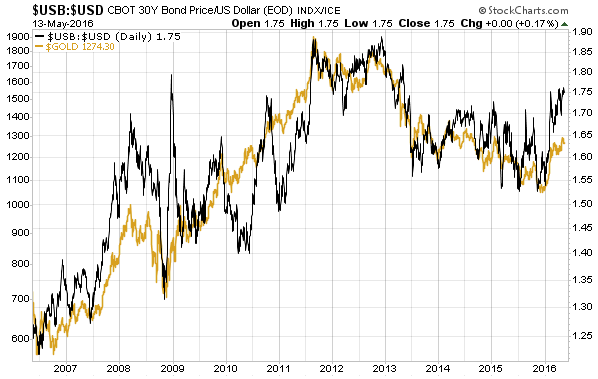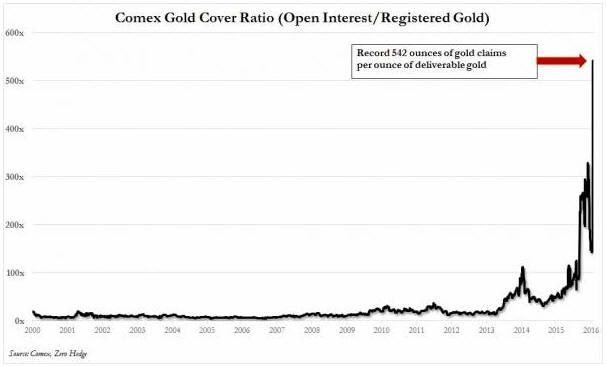A TSI subscriber recently reminded me of an indicator that I regularly cited in ‘the old days’ but haven’t mentioned over the past few years. The indicator is the bond/dollar ratio (the T-Bond price divided by the Dollar Index).
The bond/dollar ratio not only does a reasonable job of explaining trends in the US$ gold price, it does a much better job of explaining trends in the US$ gold price than does the Dollar Index in isolation. As evidence, here is a chart comparing the bond/dollar ratio (USB/USD) with the gold price followed by a chart comparing the reciprocal of the Dollar Index with the gold price. The first chart indicates a closer relationship than the second chart.
From a practical speculation standpoint, an inter-market relationship is most useful when it has a lead-lag aspect, that is, when one market usually reverses trend in advance of the other market. Unfortunately, that’s not the case here, in that gold and the bond/dollar ratio usually change direction at around the same time. For example, they both reversed upward late last year. The simple relationship does, however, help foster an understanding of why the gold price does what it does.
At the risk of casting aspersions on a good manipulation story, I note that the first of the above charts points to the US$ gold price generally having done what it should have done each step of the way over the past 10 years.
 Print This Post
Print This Post





